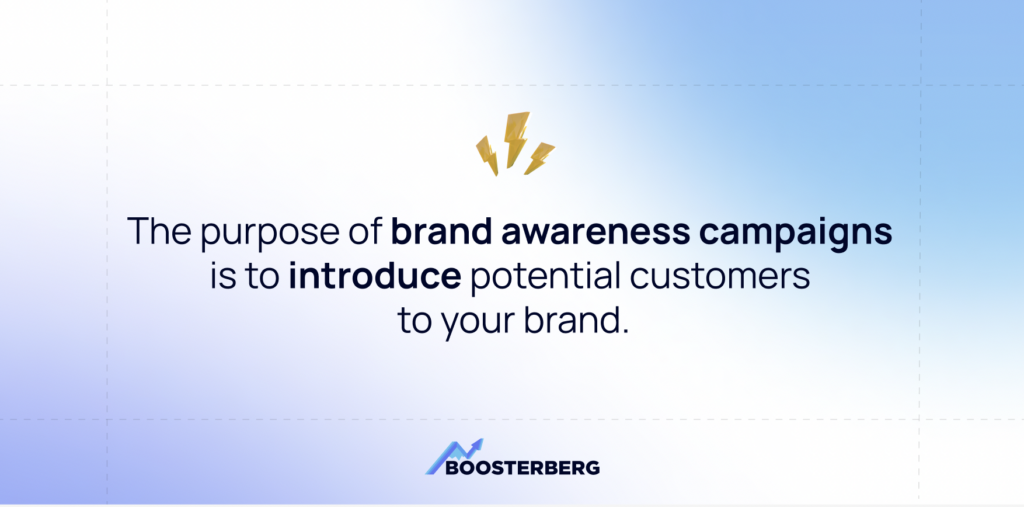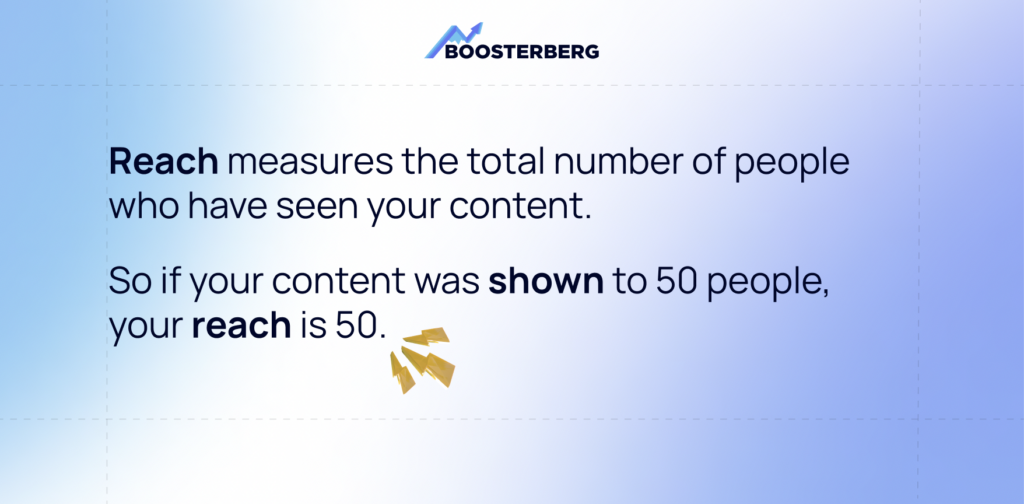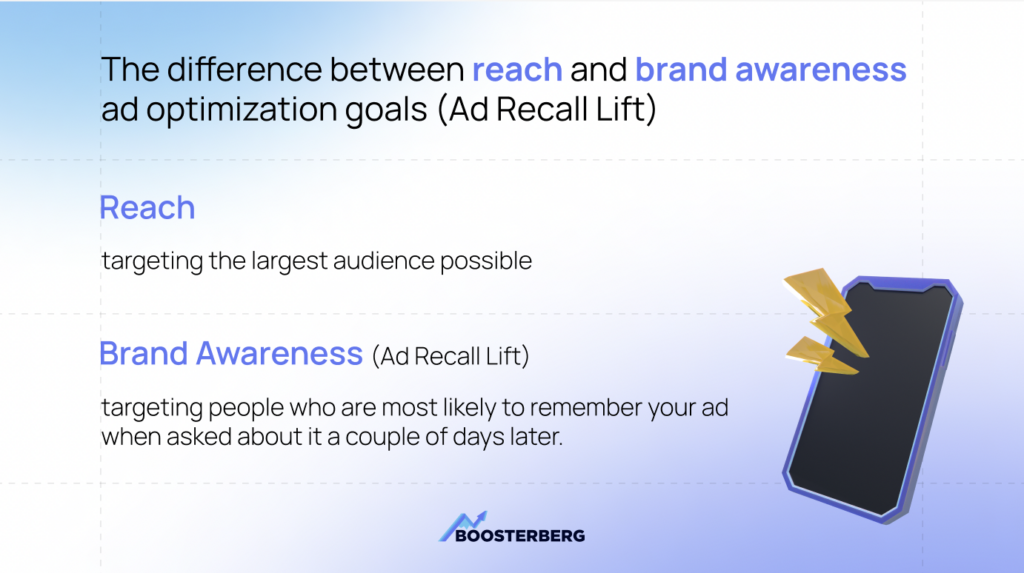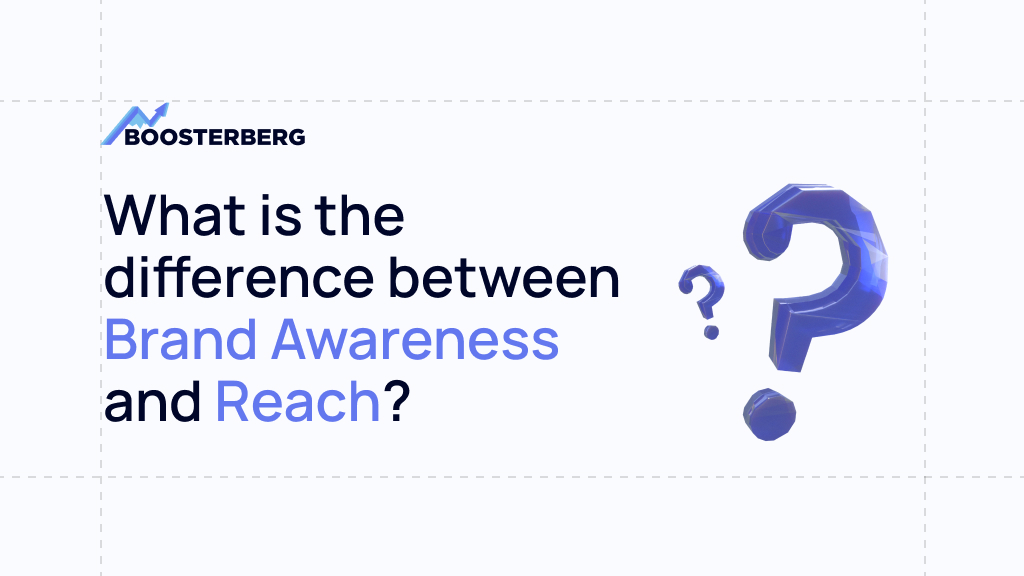You should always have a goal in mind when choosing your advertisement campaign objective. If you don’t know what you’re trying to achieve with your paid campaigns, you might as well throw your money away.
In this article, we’ll talk about two key TOFU objectives: Brand Awareness and Reach. As you will see, these two are very closely connected. It is common for advertisers to confuse them, and they do not know how to use them effectively. In fact, Facebook Ads Manager used to offer both objectives separately but merged them in 2022.
What is the difference between them, and why did Facebook merge them into one Awareness objective?
Let’s take a closer look.
BRAND AWARENESS BUILDS TRUST
Imagine the following scenario: Christmas is just around the corner, and you want to buy your partner a smartwatch as a present. It would be the quickest to order the watch online. You open the Amazon app on your phone and search for fitness watches.
What motivated you to open Amazon?
You did it because you know there is a high chance that you will find what you are searching for there. Likely, you’ve already purchased electronic devices from Amazon before, and you understand how reliable it is.
This is known as brand awareness. The brand awareness metric is used in marketing to measure the recognition and recall of a brand among its target audience. Making sure your brand is known will help potential customers remember you when they’re ready to purchase. A brand’s awareness cannot easily be measured. The lack of tangible results is why marketers steer clear of TOFU objectives, but they’re as relevant to the funnel as lead campaigns, for example. People unfamiliar with your brand are less likely to subscribe to your newsletter or purchase from you.

To explain why this “introduction stage” is relevant, let’s use the old dating example. Imagine meeting someone you like and asking them out without introducing yourself or talking to them for a while. It probably wouldn’t work. You are more likely to receive a positive response if you take the time to introduce yourself. This is why TOFU objectives, such as brand awareness, are crucial to converting your prospects, just as lower funnel sales objectives are.
Let’s move on to reach.
REACH – WIDE AUDIENCE, SMALL IMPACT
Suppose you’ve launched a brand-new online store and created a Facebook page. As a store owner, you want to inform a broad audience about your opening, but you don’t have many contacts. In this case, it would be wise to focus on reach because it will allow you to reach the largest audience possible.
In what ways does this differ from focusing on brand awareness?
Reach measures the total number of people who have seen your content. So if your content was shown to 50 people, your reach is 50. To put it another way, reach is a component of brand awareness because if you want people to know about you and remember you, you must reach them first.
Keeping in mind that without reach, there is no brand awareness, let’s look at why Facebook Ads decided to merge these two campaign objectives.

FACEBOOK ADS MERGED THE OBJECTIVES IN 2022
Facebook Ads decided to deprecate the Reach objective in 2022. In addition to that, they transformed the Brand Awareness objective, calling it simply Awareness. Why?
It makes sense to merge them when you stop to think about it. You might think that targeting the largest audience possible is a smart way to promote your brand. The problem is that you have no idea who these people are or if they are actually interested.
Solely focusing on reach does not lead to conversions. Advertisers used the reach objective to reach the largest audience possible, but it didn’t necessarily help them introduce their brand to new consumers.
A solid way to build a solid and focused audience is by using reach as part of your awareness campaign, along with ads that are shown to people who are likely to remember you after a while.
The Awareness objective
The Awareness objective is best used when you’re just starting out or rebranding and want your potential customers to know you’re there.
Facebook describes it this way:
Awareness Objective: It is for advertisers who want to show ads to people who are more likely to recall them.
This type of campaign is recommended if you want your ads to be seen by people who are likely to remember and recall your ads. Pay attention to the CPM (cost per thousand impressions) and Ad Recall Lift metrics to evaluate your success. Ad Recall Lift measures how many people remember your advertisement when asked about it two or three days after it ran. You can use this to determine how well your campaign resonates with your target audience.

However, if you still want to focus on reach, Facebook has added the option to optimize the ad delivery to the Awareness objective, allowing you to choose to optimize for:
- Reach
- Impressions
- Ad Recall Lift
- ThruPlay
- 2-second continuous video views

CONCLUSION
If you choose the brand awareness objective, your ads will be shown to people who are most likely to be interested in them. In the reach objective, your ad will be shown to as many people as possible within the budget you have set. Since 2022, these two objectives have been merged into one Awareness objective. The Awareness objective allows you to optimize your campaign to maximize reach, impressions, or video views.

Seems complicated? Sometimes it can be. Once again, the key is to have a clear goal when it comes to campaign objectives. Once you have it, there are many tools that can help you choose a social media campaign setup that works for you. Feel free to contact Boosterberg if you need help choosing the right ad objectives. Our specialists will be happy to help you with your content promotion strategy, saving you time and money, so you can focus on producing high-quality content.


